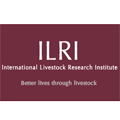 Piggery is an important sector in Uganda and a source of livelihood to over 1.1 million households. With an estimated pig population of 3.2 million (that is projected to grow to 8 million by 2020), the pig value chain is dominated by smallholder producers and small and medium enterprises (SMEs) operating under informal business relationships and unstructured markets which limit integration, coordination and overall performance.
Piggery is an important sector in Uganda and a source of livelihood to over 1.1 million households. With an estimated pig population of 3.2 million (that is projected to grow to 8 million by 2020), the pig value chain is dominated by smallholder producers and small and medium enterprises (SMEs) operating under informal business relationships and unstructured markets which limit integration, coordination and overall performance.
A recent study by scientists from the International Livestock Research Institute (ILRI) analyses the governance structures in Uganda’s smallholder pig value chain to identify inclusive models that could enhance integration and competitiveness of these SMEs. Using the New Institutional Economics framework, the study utilized cross-sectional and survey data from randomly selected value chain actors in four districts.

The findings of the study, published in the International Food and Agribusiness Review journal show that most of the live pig traders are vertically integrated, performing several functions in the value chain like transportation, pig slaughter and pork retail under single ownership. Pig farmers are largely concentrated at the production node which is largely characterized by spot markets and informal relationships.
This level of integration of the traders is positively influenced by access to market information at the retail node, value of investment in the chain and dedicated asset specificity in terms of backyard slaughter premises. Traders therefore pursue higher integration levels in order to increase their control over supply uncertainties brought about by price fluctuations due to outbreaks of diseases such as African Swine Fever.
The main conclusion of the study is that there is need to promote business models that require horizontal integration of producers into collectives to improve their bargaining power for better terms of trade and lower transaction costs relating to transportation due to economies of scale.
The researchers further highlight the investment opportunities that exist such as in setting up appropriate pig slaughter facilities through private or public-private partnerships, and the role that government ought to play by providing a favourable business environment to incentivize the private sector to invest in the pig value chain.
Read the full research article here
May 17, 2017 - ILRI




